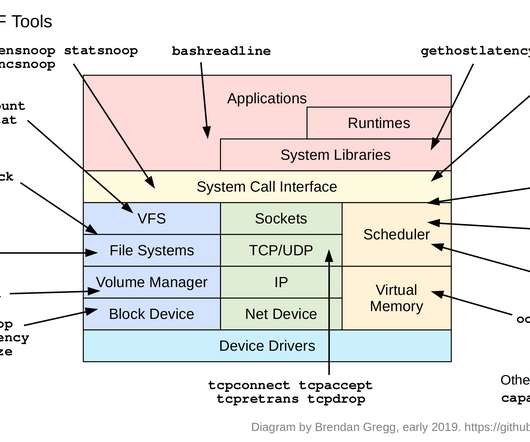A thorough introduction to bpftrace
Brendan Gregg
AUGUST 18, 2019
This example instrumented one of many thousands of available events. There are also two modes visible, one between 1 and 2 milliseconds, and another between 8 and 16 milliseconds: this sounds like cache hits and cache misses. On, say, the network engineering team, they have been using BCC to develop an agent for their needs.













Let's personalize your content